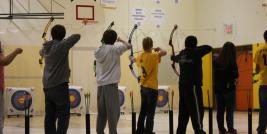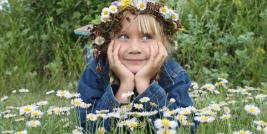The Life of Beavers is a 45 min classroom presentation on the life, behaviors, and homes of the North American beaver. This presentation includes a videos and pictures, and time for the students to look at a mounted beaver, a beaver skull, and logs and stumps chewed by a beaver. The presentation includes the following information:
Contents:
- beaver architecture - dams and lodges
- food - adaptations
- amazing adaptations
- predators- bear, wolfs
- reproduction
- winter adaptations
- rodent family
- Presentation includes taxidermy beaver, kit and muskrat, beaver skull, chewed logs, and stumps.
It is helpful for the presentation if the students are familiar with the following vocabulary.
- herbivore-plant eater
- nocturnal-active in the night
- rodent-gnawing animal
- buck-male beaver,
- doe, female beaver
- kit-baby beaver
- food cache-a hidden stash of food
- hibernate-animal that spends the winter in a dormant state
- predator-prey
Set up:
- two (2) tables, a projector, and screen
Related Documents:
| Beavers Slide Presentation |
"Facts About the Beaver" Blooket Game Link
Blooket is a review game similar to Kahoot. Sign up a FREE account at blooket.com to host a game. Use the link provided HERE, choose HOST, then a Game Mode (start with CLASSIC for the first round). A game code will be generated for players to join. You will now be able to Host the game on a big screen and have the students join in on their devices (blooket.com/play) with the Game ID.
| Curriculum Connections |
Outcomes |
Indicators |
|
Grade 1 |
Science |
LT1.1 Differentiate between living things according to observable characteristics, including appearance and behaviour. |
h,i,j,l |
|
|
Science |
LT1.2 Analyze different ways in which plants, animals, and humans interact with various natural and constructed environments to meet their basic needs. |
a,c,e,f,g,h,i,j |
|
|
Science |
DS1.2 Inquire into the ways in which plants, animals, and humans adapt to daily and seasonal changes by changing their appearance, behaviour, and/or location. |
a,c,d,f |
Grade 2 |
Science |
AN2.1 Analyze the growth and development of familiar animals, including birds, fish, insects, reptiles, amphibians, and mammals, during their life cycles. |
b,c,e,f,g |
|
|
Science |
AN2.3 Assess the interdependence of humans and animals in natural and constructed environments. |
a,d,e,f,g |
Grade 4 |
Science |
HC4.1 Investigate the interdependence of plants and animals, including humans, within habitats and communities. |
a,c,f |
|
|
Science |
HC4.2 Analyze the structures and behaviours of plants and animals that enable them to exist in various habitats. |
b,c,g |
|
|
Science |
HC4.3 Assess the effects of natural and human activities on habitats and communities, and propose actions to maintain or restore habitats. |
e,j |
Grade 6 |
Science |
DL6.1 Recognize, describe, and appreciate the diversity of living things in local and other ecosystems, and explore related careers. |
b,d |
|
|
Science |
DL6.3 Analyze the characteristics and behaviours of vertebrates (i.e., mammals, birds, reptiles, amphibians, and fish) and invertebrates. |
b,e |
|
|
Science |
DL6.4 Examine and describe structures and behaviours that help:
|
c,d,f,g,h,i |
Grade 7 |
Science |
IE7.2 Observe, illustrate, and analyze living organisms within local ecosystems as part of interconnected food webs, populations, and communities. |
i,j,l |





